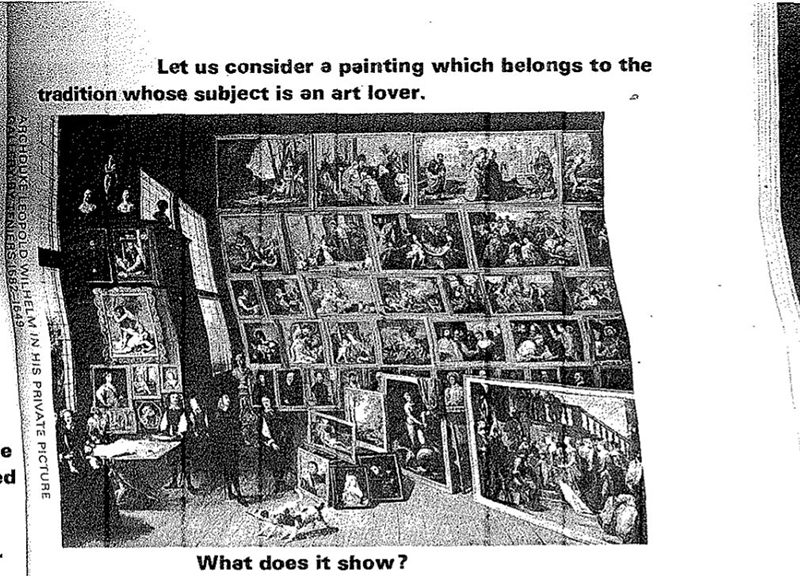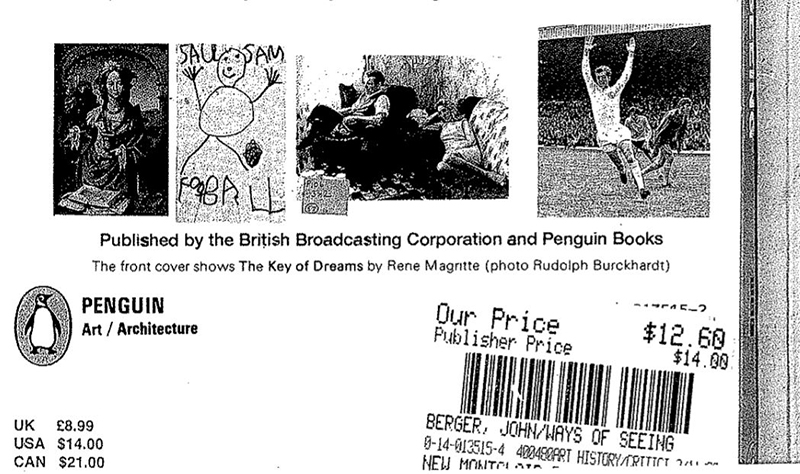A Note from the Editor
Michael Anthony Farley
A few weeks ago, while preparing reading material for our class, I came across a free, online PDF of John Berger’s 1972 classic Ways of Seeing. This pirate version—which looks to be a badly compressed upload of a scan of a black-and-white Xerox of a physical copy, still with its sale-price sticker—struck me as a somehow incongruously-yet-appropriately punk rock piece of art history. It was one of those countless documents one comes across in academia that sort of hilariously ends up looking like a DIY zine. Each step in this individual edition’s lifecycle, from bargain-bin purchase to upload, had been indexed with some sort of artifact. The result is a file that tells a visual story of provenance, ironically enough, through what we’d generally consider “loss of information”.


One could say the academic-PDF-zine-look is one of “fungibility”—now that said term has unfortunately entered our vocabulary.
I found myself thinking about our wonky copy of Ways of Seeing when contemplating a theme for our blog—a democratic medium that is, in some ways, the more recently-archaic digital analog of the DIY zine. But maybe the slightly-dated aesthetic and optimism of blogging feels freshly relevant in our new, mostly-online collective existence? The concepts of “authenticity”, reproduction, cyberpunk, and the physicality (or lack thereof) of online experiences have become recurring themes in our conversations this semester.
By another happy coincidence involving the nature of provenance, we read and discussed William Gibson’s eerily prophetic 1986 novel Count Zero the same week NFTs (Non Fungible Tokens) were the art world’s hot topic du jour, following the controversial auction of a digital artwork by Beeple that netted $69 million. The parallels between this newly relevant crypto-niche of the art world and the workings of the art market in Gibson’s non-specified “future” dystopia are uncanny-
“This, she supposed, was the aspect of art that she had the most difficulty understanding. Picard, if that was the man’s name, was speaking with a broker in New York, arranging the purchase of a certain number of ‘points’ of the work of a particular artist. A ‘point’ might be defined in any number of ways, depending on the medium involved, but it was almost certain that Picard would never see the works he was purchasing. If the artist enjoyed sufficient status, the originals were very likely crated away in some vault, where no one saw them at all. Days or years later, Picard might pick up that same phone and order the broker to sell.”
-William Gibson, Count Zero, 1986
What struck me as one of the most prescient details from the passage above was the protagonist’s admission that she didn’t understand this “aspect of art” despite being an art professional. The mechanics of real-world NFTs, the blockchain, and appropriately-named cryptocurrencies are so notoriously convoluted that they were parodied in a recent Saturday Night Live sketch—a touchstone of popular imagination.
And so, for our inaugural round of blog posts, we’ve decided to jump into the oft-heated NFT discourse. Students from Art 425 have each contributed commentary and informed opinions on topics ranging from artists’ royalties to the carbon footprint of blockchain servers. This is our first online issue, but one that I hope our readers will find enlightening.
- Liam Garrett: Two Sides of a Non-Fungible Token: One is an Ugly Truth
- Pierce Johnson: Diving into the First 5,000 Days: Exploring the NFT Phenomenon from Beeple to Climate Change
- Joseph Kemp: The Gray Areas of NFT Culture
- Leon Lai: The Hot Take
- Andrés-Sebastián Meléndez Muñoz: NFTs Might be Bad
- Brian Nguyen: Are NFTs all Hype?
- Adriana Vélez: Let’s Bring Some Nuance to the NFT Debate
